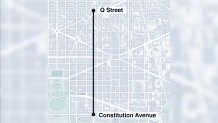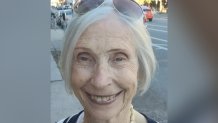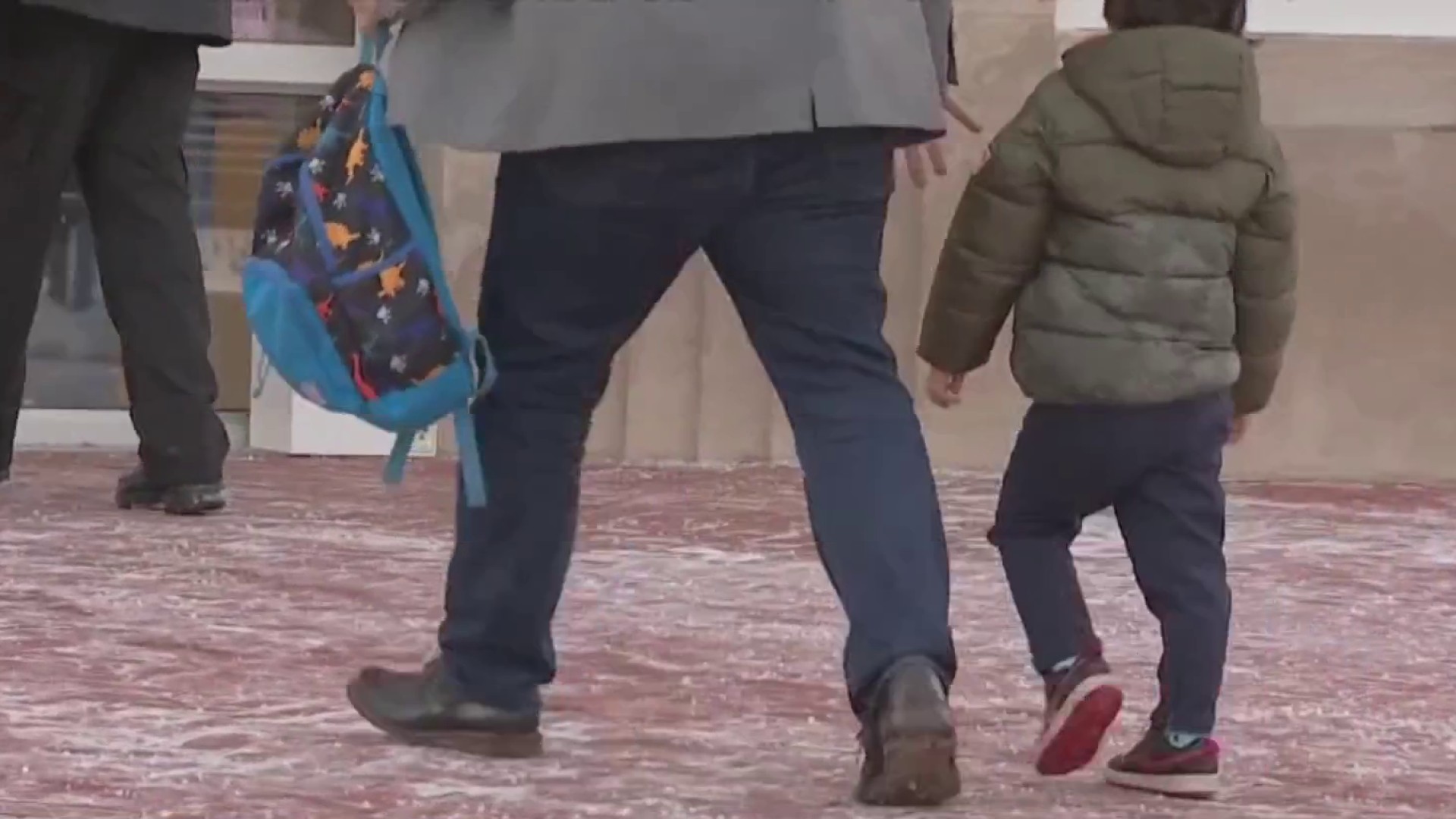
More than a thousand Washington, D.C., residents have now died of COVID-19.
That’s the equivalent of six full Metro cars or a line of people each standing six feet apart on 12th Street NW all the way from the National Mall to Q Street, halfway through D.C.’s alphabet of lettered streets.

The number of D.C. residents who have died of COVID-19 would fill about six Metro cars, accounting for people sitting and standing in 7000-series train cars. (Credit: Anisa Holmes)

If 1,000 people lined up six feet apart on 12th Street NW through downtown D.C., the line would go from Constitution Avenue to Q Street. (Credit: Anisa Holmes)
We've got the news you need to know to start your day. Sign up for the First & 4Most morning newsletter — delivered to your inbox daily. >Sign up here.
D.C. surpassed 1,000 deaths Wednesday morning, reaching 1,001, Mayor Muriel Bowser's office announced. Women who were 67, 73 and 79 are the latest victims of the virus.
The mayor declared Wednesday A Day of Remembrance for Lives Lost to COVID-19 and paid tribute to the victims.
“Today, we mourn the loss of more than 1,000 Washingtonians to COVID-19. These beautiful souls who passed were grandparents, parents, siblings, cousins, neighbors, classmates, colleagues, friends, and loved ones. This tragic milestone is a reminder that this pandemic has forever changed families and communities,” she said in a statement.
Local
Washington, D.C., Maryland and Virginia local news, events and information
Houses of worship citywide are urged to honor the victims at 6 p.m. Wednesday.
Behind each announcement of each death is a wave of grief for a family and community.
Writer and editor Millie Riley lived near Dupont Circle for 50 years and loved D.C.’s urban life and cultural offerings. She raised her daughters, artist Rachele Riley and primatologist Erin Riley, to “have our own vision of our life,” Rachele Riley said.
Millie Riley died in May 2020 at age 84, weeks after she contracted COVID-19. She had Alzheimer’s disease but was active and healthy before catching the virus.
“She lived a really passionate life. Even with Alzheimer’s, she had joy," her daughter said.

Rachele Riley said it was staggering in the weeks after her mother’s death to read that more than 100,000 Americans had died of COVID-19. That figure has now surpassed 502,000, according to data compiled by Johns Hopkins University & Medicine.
“It has been hard to see the numbers climb,” Rachele Riley said. “It’s scary to think of her as just one person within all these other families.”
COVID-19 has taken lives in D.C. across communities and professions.
Ballou S.T.A.Y. High School cosmetology teacher Helenmaire White died of COVID-19 earlier this month at age 62, her family announced. White, a Ward 8 native, had five children and nine grandchildren, and gave young women a chance to launch their careers.
Patrick Ellis hosted the “Gospel Spirit” radio show on 96.3 WHUR-FM for more than four decades and died in July at age 77 after contracting the virus. He taught future broadcasters at Howard University and was dear to church congregations across the D.C. area.
Don Brooks, a Brookland resident, helped run the historic Carnegie Institution for Science for more than 50 years. He died of COVID-19 in October, weeks before he was set to retire.
Black D.C. residents make up the overwhelming majority of those killed by the virus. Three-quarters of victims have been Black, according to city data. Hispanic and Latinx people made up the next largest group, at 12%, followed by white residents, at 11 percent.
"Long-standing systemic health and social inequities” put racial and ethnic minority groups at risk, the Centers for Disease Control and Prevention says, citing factors including poverty, health care access, discrimination, occupation and housing conditions.
It’s been nearly a year since D.C. residents began dying of COVID-19. The first case in the District was identified March 7, 2020. D.C. public schools shut down March 13, the first death was announced March 20 and D.C.'s mayor issued a stay-at-home order March 30. Residents hunkered down at home with still-scant information about the virus that would change their lives.
As residents died of the virus, being unable to hold funerals because of the health risks stacked pain on top of pain. Obituary after obituary every day for more than a year says families have chosen to postpone funerals.
Nine months after Millie Riley’s death, her family still hasn’t held a memorial. They decided to meet virtually next month.
“Her life has been uncelebrated,” Riley’s daughter said.
A number of public memorials in D.C. have honored COVID-19 victims.
A field of more than 200,000 small, white flags were planted near RFK Stadium in the fall, marking the number of Americans who had died of the virus then. The public art project by artist Suzanne Brennan Firstenberg was titled "In America, How Could This Happen.”
Photos: Artist Installs More Than 200,000 Flags in DC, Symbolizing COVID-19 Deaths
A group of COVID-19 survivors asking for a national safety and recovery plan arranged more than 20,000 empty chairs on the Ellipse near the White House in the fall.
On the eve of his inauguration, President Joe Biden and Vice President Kamala Harris held a memorial service at the Lincoln Memorial for the more than 400,000 Americans who had died of COVID-19. Hundreds of pale-orange lights lined the Reflecting Pool.
Earlier that evening, the Washington National Cathedral and churches across the U.S. tolled bells to mark the deaths. The National Cathedral rang its funeral bell 400 times, with each peal representing a thousand Americans killed.
Millie Riley’s daughter honors her mother by baking bread and making soup according to her mom's recipes, and working on art projects she knows would have interested her.
She started a journal for her 10-year-old son filled with memories of his grandmother.
“As a story occurs to me, I’m writing it down,” she said.



